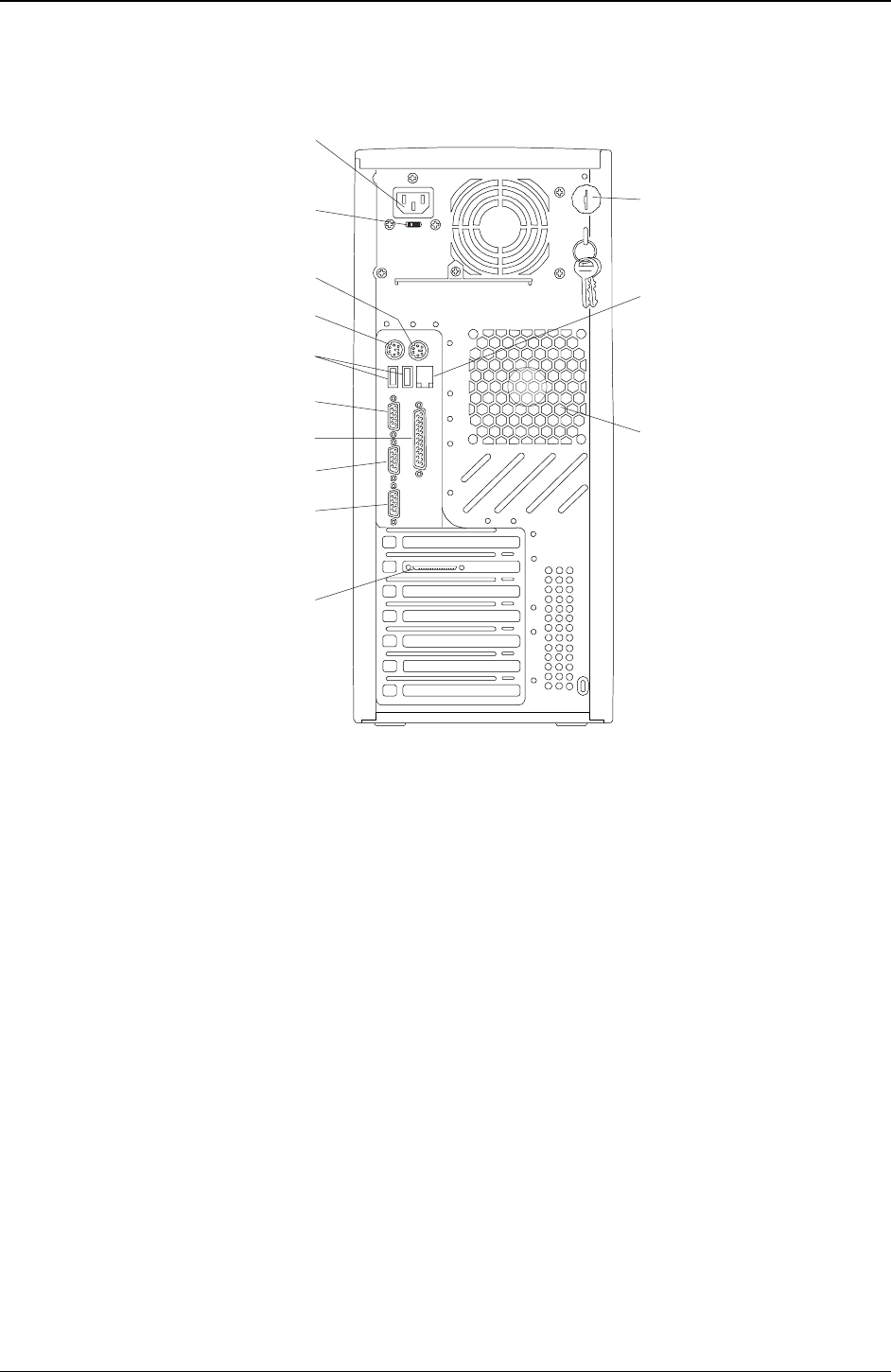Service manual
Table Of Contents
- 1 Specifications
- 2 Controls, Ports, and Indicators
- 3 Connector Pinouts
- 4 Maintenance Guidelines
- 5 Error Messages
- 6 Diagnostics
- 7 Maintenance and Troubleshooting
- Preventive Maintenance Procedures
- Troubleshooting
- Password Problems
- General Server Problems
- No lights are on and no error message appears
- Operating system or an application is not responding properly
- Server stops working (hangs)
- Server does not start (boot)
- Power Problems
- Video/Monitor Problems
- Configuration Problems
- Printer/Datacomm Problems
- Keyboard and Mouse Problems
- Flexible Disk Drive Problems
- CD-ROM Problems
- SCSI Problems
- Processor Problems
- Memory Problems
- Embedded Network Interface Card Problems
- Network Interface Card (Installed) Problems
- 8 Parts and Illustrations
- 9 Remove/Replace Procedures
- Introduction
- Covers
- Front Bezels
- Status Panel Assembly
- Mass Storage Devices
- Removing the Flexible Disk Drive
- Replacing the Flexible Disk Drive
- Removing the CD-ROM
- Replacing the CD-ROM
- Removing a Backup Tape Drive
- Replacing a Backup Tape Drive
- Removing a Hard Disk Drive (Tray Mounted)
- Replacing a Hard Disk Drive (Tray Mounted)
- Removing a Hard Disk Drive (Drive Cage Mounted)
- Replacing a Hard Disk Drive (Drive Cage Mounted)
- DIMMs
- Processor
- Accessory Boards
- Power Supply
- Battery
- Chassis Fan
- System Board
- Index

Chapter 2 Controls, Ports, and Indicators
13
Rear Panel Ports and Features
The following text and illustration describe the ports, switches, and unique features on the Server's rear panel.
Power
Mouse
Keyboard
USB (2)
LAN
COM 2
Parallel
Keylock
Video
COM 1
System
Fan
Input
Voltage
Switch
External
SCSI
(SCSI
Model
only)
HP Server – Rear View
• The power connector accepts a standard power cable to connect the HP Server tc2100 with the site
power source.
• The input voltage selector switch is used to adapt the power supply to the input line voltage. The two
switch settings are 115 volts or 230 volts, and 230 volts is the default setting.
• The mouse port accepts a standard mouse with a PS/2 connector.
• The keyboard port accepts a standard keyboard with a PS/2 connector.
• Two USB ports are provided for printers, external modems, a keyboard and a mouse, but these features
are NOS dependent.
• The COM 1 port is a standard serial port.
• The Parallel Port is a standard parallel printer port, which supports Extended Capabilities Port
(ECP)/Enhanced Parallel Port (EPP).
• The Monitor Port (SVGA) interface specifications are listed in the following tables "HP Server
Hardware Specifications" and "Video Display Modes" of Chapter 1, "Specifications."
• The COM 2 port is a standard serial port.
• The SCSI model has an external SCSI port for external SCSI devices provided by the single channel
SCSI controller board, but can only be used when no SCSI devices are connected internally.
• Keylock mechanism provides mechanical security for the left side panel to prevent access to the internal
components.










